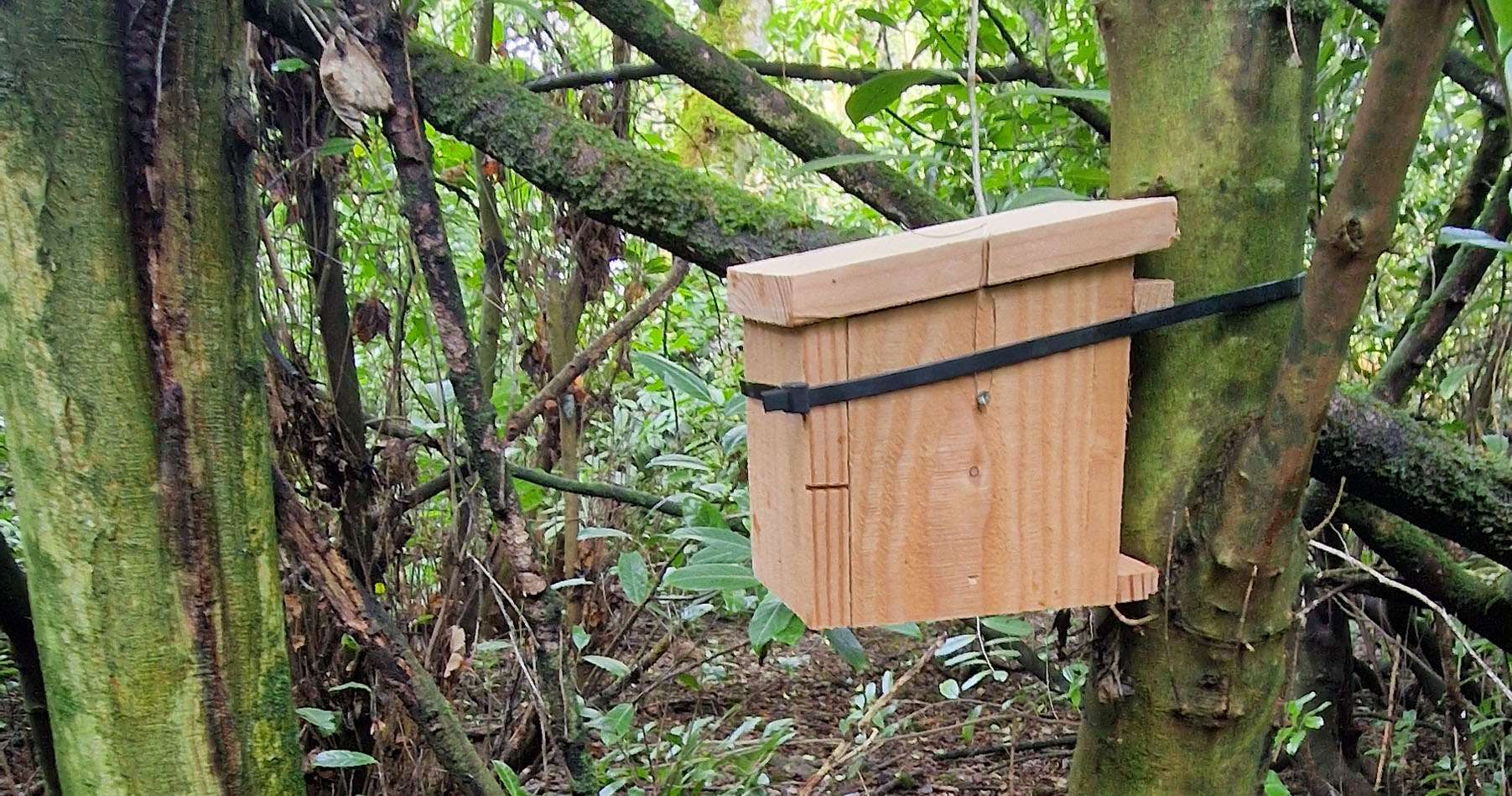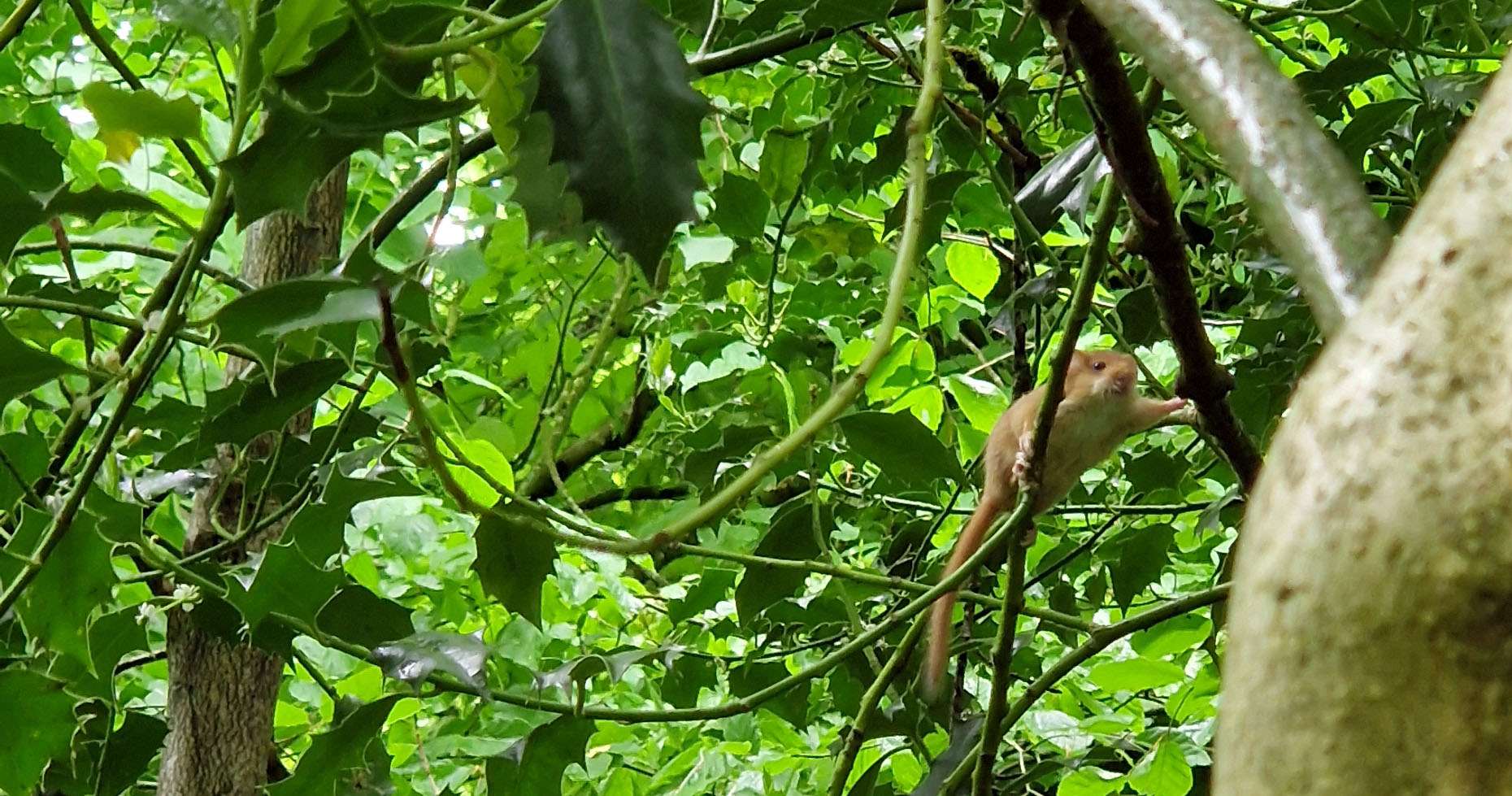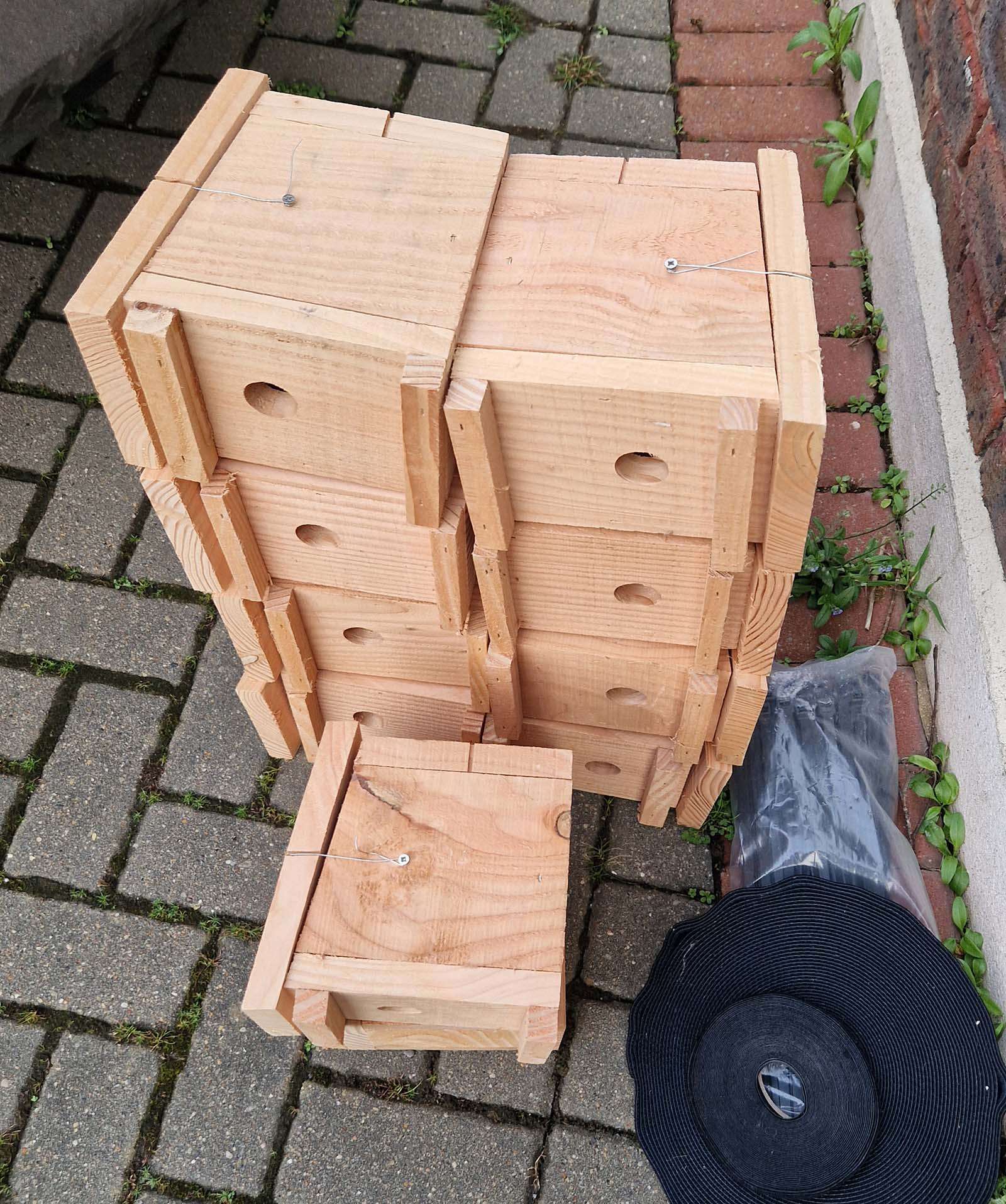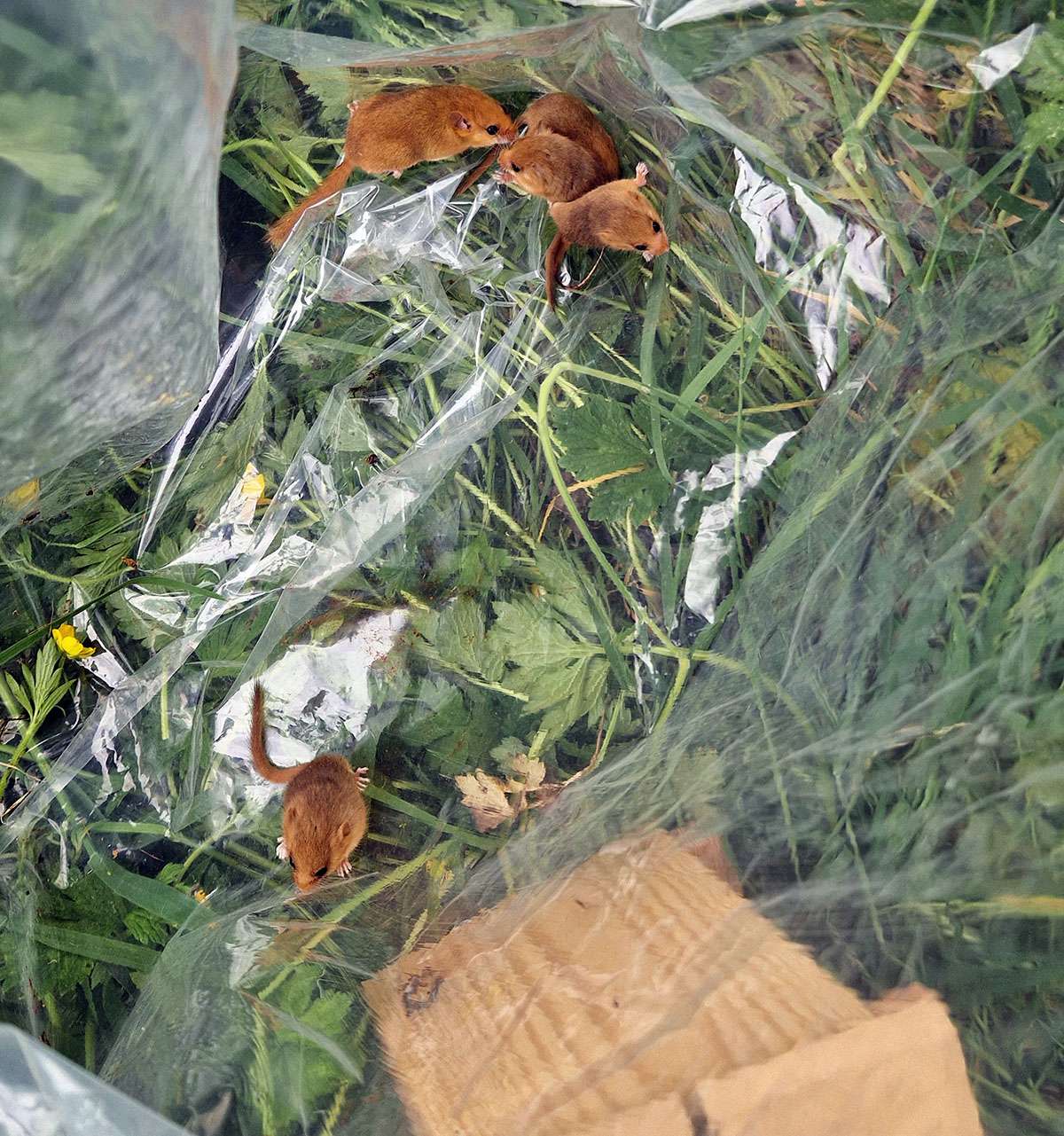
Like many people in the nature conservation community in Ireland I was intrigued whenever I first heard that a population of Hazel Dormice Muscardinus avellanarius had been found in Ireland1, and in County Kildare no less.

A million questions were flying around in my head at the time; where did they come from and how did they get here? How were they faring in population terms, as Kildare is more known for its stud farms than for its ancient woodlands. Then when some of these questions were answered by researchers2, yet more questions arose.
How did the population successfully navigate across two motorways and a river as they spread across the county? Why is the population flourishing here whenever a 50% population decline has been noted in Britain since 2000 (although this has recently slowed and with 29% of sites showing an increase in their population)? Will the population crash and burn after an initial colonisation and expansion phase? Or will they increase further whenever they reach the woodlands of County Wicklow?

These questions rose and faded in my mind over a number of years until late 2023, at which point I thought, why not try and establish a citizen science programme in order to garner some more Dormouse records in County Kildare (after a decade had passed since the initial furore after their discovery)? To kickstart the idea I wrote a short piece which I sent into the Leinster Leader3 asking for people to contact me at Wild Gaia with records. This led several emails arriving, one of which was from a Joanna Barry at Russborough House, which caught my attention. This was due to the photos she sent and her statement that there was “a large population of Hazel Dormouse in Russborough.”
This got me thinking, why not establish an Irish Dormouse monitoring site (based on the dormouse monitoring guidelines used in Britain)? Perhaps then, I could, over time, answer some of my own burning questions; and so that’s exactly what I did.
Early 2024 (during late winter and early spring) I placed out 50 wooden Dormice boxes around the grounds of Russborough House (50 is the number recommended in the NDMP guidelines). Then in May 2024, came the fun part. I got to check all the boxes and see what if anything was using them.

The inaugural 2024 monitoring season didn’t disappoint. In fact, the very first box I check at 0930hrs on the 25th May, I was astonished to be meet with an adult Dormouse jumping out of the top of the box as I opened it and running up into the tree canopy as quick as lightening. Normally, in other countries I would be doing these checks after some training, and perhaps alongside a mentor os sorts. None of these are available to me in Ireland, so my first visit was a steep learning curve to say the least.
The next 7 boxes were empty save for a disused bird nest. But in box number 9 there was an adult female with 2 young dormice (or GEC is the technical term puts it) which translates to Grey fur and Eyes still Closed). I was very interested in this result as the habitat where the box was situated was quite poor in woodland terms with an understory completely dominated by laurel, but perhaps this makes sense, given the absence of any natural nesting sites as would be the case if there was any bramble, honeysuckle or other similar vegetation within which to build a nest.
The next 17 boxes were again empty, save for a single active great tit nest which I obviously left undisturbed. Then in box 27, another adult shot out and up the tree the box was on before I knew what was happening, clearly, I didn’t learn my lesson from the first box I opened. Another 7 empty boxes were checked and then the 35th box had a dormouse nest in it but no mice were present. Then in box 37 came the pièce de resistance; with half a dozen dormice in the box. I was enthralled and amazed in equal measure. On closer inspection, there was a single adult and 5 juveniles.

Of the remaining 13 boxes, 11 were empty, 1 had a single adult and another had an adult with 2 juveniles. It was some haul for my first round of inspections. In total 6 of the 50 boxes were in use and 5 had young dormice/juveniles. I was very pleased to say the least. Back in the office I was corresponding with Dr Ian White (PTES – Peoples Trust for Endangered Species, Dormouse and Training Officer) as there was no one in Ireland to advise me. He was extremely helpful and has an unrivalled knowledge of dormice ecology. I excitedly filled him in on the results of my May visits, and his response a few days later added to the excitement I felt after the May round of monitoring.
In England & Wales, between 1990 and 2023, 9684 litters were recorded across all monitoring sites. Of these only 93 (0.93% adjusted to number recorded per 50 boxes checked) were recorded in May, so litters born in May seems to be a relatively rare event. From the photo I provided Dr White suggested that the young I recorded were at eyes open stage, not yet weaned but not far off. That would mean they were at least three weeks old and so born at the beginning of May. Therefore, either the mother didn’t hibernate at all or she woke early and mated in early April. In England & Wales they have never recorded Eyes Open in May.
It’s very encouraging to find such a healthy population in the Russborough House Estate, however it’s important to consider the wider context; the hazel dormouse is a recent non-native accidental introduction to Ireland. Hopefully this monitoring scheme will help to inform the knowledge base around this presence of this charismatic creature in Ireland.
I will be continuing the monitoring during the winter of 2024/25 as well as during the 2025 survey season. I am hoping further interesting insights will be garnered into the ecology of the dormice in Ireland.
Please do not tamper with or check any boxes you see in order to reduce disturbance – Thank you.
Written by Cormac Loughran, Head of Conservation at WildGaia.org
1 Sheehy, E. and Lawton, C. (2015) Distribution of the non-native Hazel Dormouse (Muscardinus avellanarius) in Ireland. Irish Naturalists' Journal 34: 13-16.
2 Glass, Deborah, et al. "The origins of the County Kildare Dormouse." Biology and Environment: Proceedings of the Royal Irish Academy, vol. 115B no. 1, 2015, p. 11-16. Project MUSE, https://dx.doi.org/10.1353/bae.2015.0012.